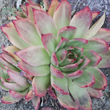
Avid traditional tea drinkers would not agree with the use of the word tea for herbal teas. From an herbalist’s perspective, the word “tea” refers to the preparation of an herb in water, by boiling or steeping to release its flavors and medicinal constituents into the water, making the medicine drinkable, if not enjoyable. Some teas transmit healing through taste, so a tea is the best way to take your medicine.
Teas on this website are viewed from the field of possibilities in culinary or medicinal uses. Reviews of books on teas focus on either caffeinated teas—green, red, white or black—or herbal teas; authors have chosen sides. Until recently, the most sophisticated and well-photographed books on teas represented traditional, caffeinated teas, with all the proper trimmings for a cup to which hot water and leaves together make for memorable beverages. That is until a pair of herbalist-authors published their book on herbal teas earlier this year (2016).
How do you take your herbs? Medicinal teas have a long history in herbalism, both in Asia and the West. In teas herbal “mixtures” or improvised formulas are possible. A tea-for-colds remedy could consist of 3-4 herbs such as rosehips, Echinacea root, peppermint, and yarrow.
There are a huge variety of possibilities–see the reviews of Herbal Teas for types and selections.



